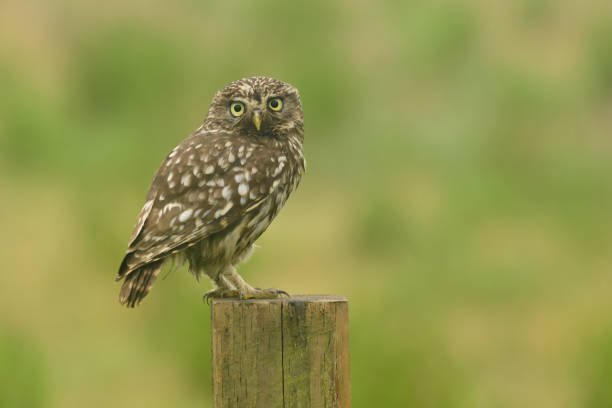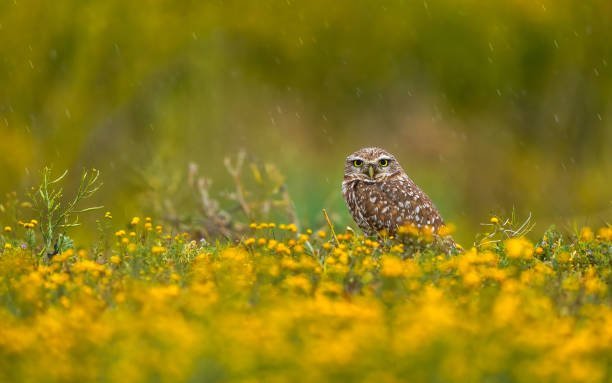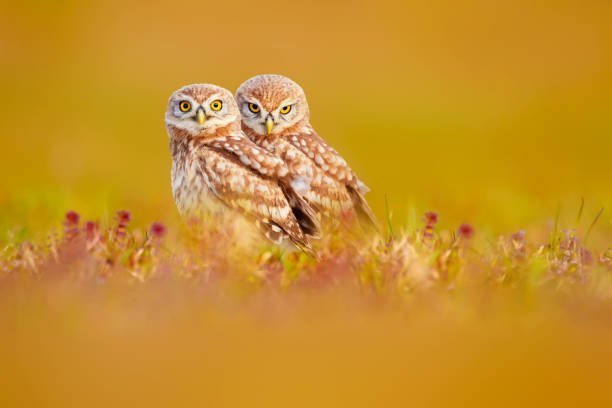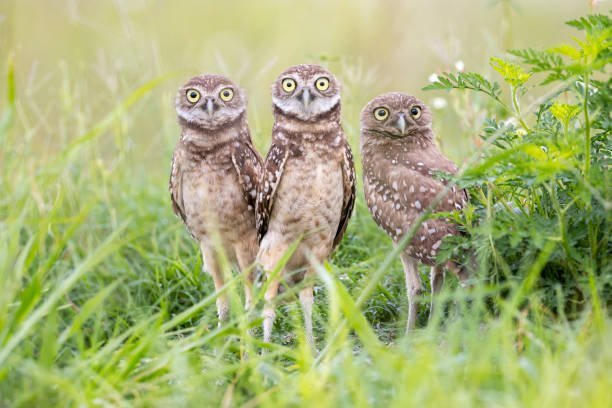What are the signs that indicate an owl is in need of immediate rescue?

Introduction:
In this article, I’ll guide you through the subtle yet crucial indicators that signal when an owl is in dire need of immediate rescue. Owls, with their mysterious nocturnal habits and silent flight, are fascinating creatures of the night. However, they can face various challenges in their environment that may necessitate human intervention. Recognizing the signs of distress in owls is vital, as prompt action can be the difference between life and death for these magnificent birds of prey.
While these raptors are highly adapted to their habitats, there are moments when they become vulnerable and require help. By understanding the telltale signs that an owl is in trouble, you can contribute to their conservation and well-being. This article will empower you with the knowledge to identify these signs and take appropriate measures to ensure the safety and survival of these enigmatic birds.
Unusual Daytime Activity:
Owls are renowned for their nocturnal nature, making daytime activity a potential sign of distress. When owls are seen unusually active during daylight hours, it often indicates an underlying issue. While some species may occasionally hunt or forage during the day, a consistent deviation from their natural behavior should be cause for concern. This deviation can be attributed to various factors, including sickness, injury, or a lack of food availability, prompting them to hunt when they would typically rest. Observing such unusual daytime activity in an owl is an essential initial indicator that something may be amiss.
In the wild, owls are skilled hunters under the cover of darkness, relying on their keen night vision and silent flight to capture prey effectively. Being active during the day puts them at a disadvantage, increasing their vulnerability to predation and human interference. It is crucial to note that the specific species of owl and its geographical location may also influence what is considered “unusual” daytime behavior, as some owls are naturally more diurnal than others. Therefore, careful observation and consideration of the owl’s natural behavior in its specific context are essential to determine if a rescue is warranted.
Owls displaying unusual daytime activity should be monitored closely, and if their behavior persists, it may be necessary to contact local wildlife authorities or rehabilitators who can assess the situation and provide the necessary care.
Weak or Disoriented Behavior:
Another significant sign that an owl may be in need of immediate rescue is when it exhibits weakness or disoriented behavior. Owls are typically graceful and purposeful in their movements, with a keen sense of direction. When an owl appears unsteady, disoriented, or unable to maintain its balance, it is often a clear indication of an underlying problem. Weakness and disorientation can result from various factors, including injuries, illness, poisoning, or malnutrition.
Weak or disoriented owls may struggle to fly, perch, or hunt effectively, making their survival in the wild a challenge. Their physical condition can deteriorate rapidly without intervention, and they become easy targets for predators or accidents. Therefore, recognizing these signs is critical in providing timely assistance to the owl and ensuring its well-being.
In such cases, it is advisable to contact local wildlife rehabilitators or authorities with expertise in handling and rehabilitating owls. These professionals can assess the owl’s condition, provide appropriate medical care, and take necessary steps for its rehabilitation and eventual release into its natural habitat.
Visible Injuries or Blood:
The presence of visible injuries or blood on an owl is a compelling and distressing sign that immediate rescue is warranted. Owls, like all wildlife, are susceptible to injuries resulting from various causes, such as collisions with vehicles, buildings, or other objects, as well as encounters with predators or accidents during hunting or territorial disputes. These injuries can manifest in the form of cuts, bruises, puncture wounds, or fractures, and they are often accompanied by bleeding.
Injured owls are not only in pain and distress but are also at risk of infection, which can lead to severe complications if left untreated. Additionally, loss of blood can weaken the owl and compromise its ability to hunt and defend itself, making it highly vulnerable in the wild. Therefore, any visible injuries or signs of blood on an owl should be treated as a serious matter.
Rescuing an injured owl may require specialized skills and knowledge, so it is advisable to contact wildlife rehabilitation centers, veterinarians, or wildlife authorities who are equipped to handle and provide appropriate medical care to the injured bird. The prompt attention and treatment provided to an injured owl can significantly increase its chances of recovery and successful reintegration into its natural habitat.
Feather Damage or Loss:
Feathers are not just for adornment; they are vital for an owl’s survival. When an owl exhibits significant feather damage or loss, it can be a clear indication of distress. Feathers serve multiple essential functions, including insulation, camouflage, and noise reduction during flight. Any damage to feathers can disrupt these functions and affect the owl’s ability to hunt and evade predators effectively.
Feather damage can result from various causes, such as accidents, physical injuries, predation attempts, or even human interference, like getting entangled in fences or other man-made structures. In some cases, owls may engage in self-mutilation if they are experiencing high stress or discomfort.
For owls, regrowing feathers can be a slow and energy-intensive process, making their survival in the wild challenging without the ability to fly or maintain their thermoregulation. Consequently, it is vital to address feather issues promptly. Wildlife rehabilitators have the expertise to assess feather damage and develop rehabilitation plans to ensure the owl’s feathers regrow correctly and that it can return to the wild as a fully functional predator.
Inability to Fly or Perch:
The inability of an owl to fly or perch properly is a strong indicator that it requires immediate rescue and intervention. Owls are masters of flight, characterized by silent and efficient wingbeats. When an owl cannot fly or perch as expected, it signifies that there is a significant issue impacting its physical health.
Flight is not only crucial for hunting and escaping threats but also for an owl’s territorial activities and mating behaviors. Inability to fly may result from various factors, including injuries to the wings or musculoskeletal issues. In such cases, owls are left vulnerable and unable to perform their essential life functions.
The inability to perch, another essential aspect of an owl’s behavior, is indicative of muscle weakness or nerve damage. Perching allows owls to rest, observe their surroundings, and conserve energy. When an owl cannot perch properly, it loses these advantages, and its survival is compromised.
Rescue and rehabilitation efforts become necessary to assess the extent of the owl’s condition, provide appropriate medical treatment, and potentially initiate rehabilitation to restore its flight and perching abilities. Professional guidance from wildlife rehabilitators or veterinarians is crucial in these situations to ensure the owl’s recovery and eventual release back into its natural habitat.
Excessive Shivering or Trembling:
Excessive shivering or trembling in an owl is a concerning sign that it is in distress. Owls are highly adapted to cold environments, possessing specialized features like dense plumage and insulation for maintaining their body temperature. When they display visible signs of shivering or trembling, it usually indicates that their internal thermostat is struggling to function effectively.
Such symptoms can be triggered by various factors, including exposure to extreme weather conditions, malnutrition, or underlying illnesses. Prolonged exposure to cold can lead to hypothermia, which, if left untreated, can be fatal for an owl. Additionally, trembling or shivering consumes energy and places additional stress on the owl’s body.
In situations where owls are observed shivering excessively, it is essential to provide immediate care to mitigate the effects of cold exposure and address any underlying health issues. Wildlife rehabilitators are equipped to handle these cases, offering proper shelter, nutrition, and medical assistance to help the owl regain its strength and recover from the distressing symptoms.
Trapped or Entangled:
When an owl becomes trapped or entangled in man-made structures or objects, it is a compelling sign that it requires immediate rescue. Owls may inadvertently find themselves ensnared in a variety of situations, such as fences, netting, fishing lines, or even discarded items like plastic bags or debris. Being trapped can lead to exhaustion, injury, or even death if the owl is unable to free itself.
Entanglement is particularly perilous because it restricts an owl’s movement, affecting its ability to hunt, fly, or escape from potential predators. In such situations, it is essential to intervene as quickly as possible to prevent further harm or suffering.
Rescue and release procedures should be performed by professionals trained in handling wildlife entanglement cases. These experts can safely extricate the owl from its predicament, assess its condition, and provide any necessary medical care or rehabilitation to ensure its successful return to the wild.
Nest Disturbance or Orphaned Chicks:
Nest disturbance or the discovery of orphaned owl chicks can also necessitate immediate rescue efforts. Nest disturbance can occur due to natural factors like storms, predators, or human activities such as tree trimming or construction. When a nest is compromised, it can lead to the abandonment of owl chicks by their parents, placing their survival in jeopardy.
Similarly, orphaned owl chicks may be discovered on the ground, unable to fend for themselves. In both cases, these young owls are highly vulnerable and require human intervention to ensure their well-being and survival.
Rescuing and caring for orphaned owl chicks demands specialized knowledge and facilities. Licensed wildlife rehabilitators or organizations that specialize in avian rehabilitation are equipped to provide the appropriate care, nutrition, and shelter needed to raise and eventually release these young owls back into their natural habitat.
Conclusion:
I hope this article has shed light on the critical signs that indicate when an owl is in need of immediate rescue. Owls, with their mystique and silent presence in the night, capture our imagination and play essential roles in maintaining ecological balance. Recognizing their distress signals is a responsibility we all share, as it can mean the difference between life and death for these magnificent raptors.
From unusual daytime activity to visible injuries, feather damage, and shivering, each sign serves as a compelling call for assistance. Owls are resilient creatures, but they, too, can face adversity in the wild. By understanding these signs and acting swiftly to contact local wildlife rehabilitators and authorities, we can contribute to their well-being and the preservation of these unique birds.
In the end, our collective efforts ensure that owls continue to grace our nocturnal landscapes, reminding us of the profound beauty and importance of nature’s delicate balance.










Post Comment